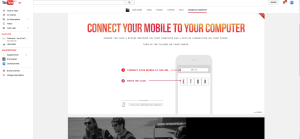A recent article published by two members in our laboratory (Cristina Leovaridis and Diana-Maria Cismaru, 2014) in Management Dynamics in the Knowledge Economy focused on organizational culture and climate in knowledge-intensive organizations, aiming to identify the specific values and features of climate for each sector.The sample included organizations from five sectors: higher education, banking and financial, research and development, IT and marketing-advertising. The qualitative design of research included near 80 in-depth interviews with employees and managers.
Results showed that the presence of team spirit and support, cooperation among co-workers, as well as the existence of a positive atmosphere, help and cooperation can be found especially in the IT and banking sectors (all of the respondents), for three quarters of the RD sectors, two thirds of the advertising sector and for only half of the employees of the higher education sector. This level of satisfaction reduces while evaluating the vertical ascending communication: three quarters of the interviewees of the banking and higher education sectors and two thirds of employees in the IT sector are content that the superior “listens to them”; in advertising and RD, only half of the interviewed employees considered this form of communication satisfactory.
All the interviewed employees of the advertising, IT and banking sector experienced the presence within the company of some forms of organizational culture (Christmas parties, team buildings, award ceremonies ni advertising and IT sector, and also written and unwritten internal norms and values in the banking sector, or myths on the founders in the multinational companies sectors). In the higher education sector, only half of the respondents admit the presence of an organizational culture in their institution (represented through some anniversaries and co-worker anniversaries). Finally, in the public funded RD sector, employees reportedly did not experience manifestations of any type of “visible artifacts” or values of organizational culture.
The picture of climate dimensions has been very different from one sector to other: from autonomy, teamwork, creativity and friendship, on one extreme, to discipline, respect for rules and accomplishing goals, on the other extreme. Thus, in the advertising-marketing sector the climate is based on human relations and friendship (in the small Romanian agencies) and on co-worker competition and task achievement (in the multinational agencies); in the IT sector, climate is based on human relations, friendship, as well as on accomplishing goals, discipline and respect for rules; in the banking sector – on discipline and obeying rules followed by competition among co-workers and task achievement; in the RD private institutes on achieving goals, while in the public RD institutes on freedom, creativity as well as competition between colleagues; in the higher education sector on accomplishing goals, accompanied by encouraging initiative and creativity, along with competition.
As a recommendation, in the knowledge-intensive organizations, the rigid, hierarchical and control-based management should be replaced with a flexible management based on shared meanings, common identity, in order to motivate and maintain loyal the expert-employees.
















